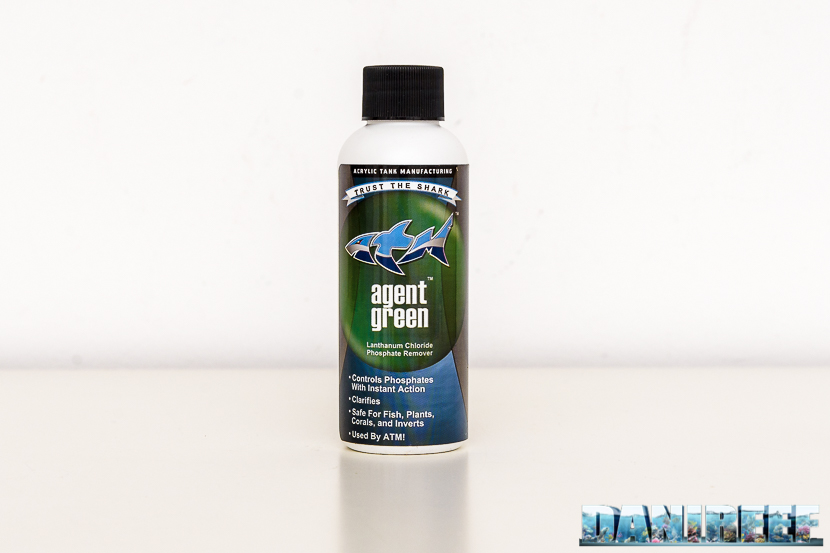Agent Green is the solution set forth by ATM for the removal of phosphates in both freshwater and marine aquariums, a big leap from the usual resins that we have always used. The difference? Its speed and its results.
The active substance in Agent Green is the well known lantanum chloride (LaCl), which immediately binds to the phosphates in the water, making them flocculate and precipitate, and therefore making them inert.
The difference between this product and a fluidized bed with anti-phosphate resins is remarkable. Upon dosing the product, the phosphate level decreases. The result is practically immediate. We don’t need a fluidized bed, and we don’t need to wait a few days for the resins’ effect.
Considering the peculiarities of the Lantanium Chloride, we advise you to strictly follow the suggested dose, and err on the side of dosing too little rather than too much. This is because the floccules should be taken and removed by the skimmer. Otherwise, they can fall onto the glass, on the technical equipments, and even on the fishes themselves. If the water becomes cloudy after a dosing, it means that you have overdosed the product.
At the suggested dose the product is not toxic and does not create troubles to animals, corals, plants, or bacteria, so its dosing is absolutely safe. The recommended dosage is strictly correlated to the phosphate level that you have in your tank at the time, not to the tank’s volume of water. So a proper measurement of the phosphate level is required before and after dosing ATM Agent Green.
I suggest that you also use a mechanical filtration to remove all the floccules that possibly remain in suspension. To get the best results from ATM Agent Green I suggest a high pH level, above 8, that allows a higher binding between lantanium and phosphate. That’s why it is better to dose the product at night after turning off the lights, rather than in the morning before they turn on.
Price and conditions of use of ATM Agent Green
This product is not cheap- the 118 ml bottle costs 25,80 euro ($30 USD), though the price is similar to the anti-phosphate resins. ATM says that the product is enough for 4731 liters even if, as I said before, it is more important to know how much phosphate it can remove.
Phosphates in a marine aquarium need to stay within a concentration of 0.3 mg/l so that we don’t have a complete block of calcification for most corals. Higher values are absolutely toxic for fishes and the other inhabitants of our tanks.
I recommend that you take baby steps, dosing the product little by little, and checking the development of the phosphates level in your tank. If you want to tell us about your experiences, it would be an excellent example to the people that want to use this product; feel free to share your experiences on our social channels and in the comments.
[Translated by Federico Lavezzi]












0 Comments